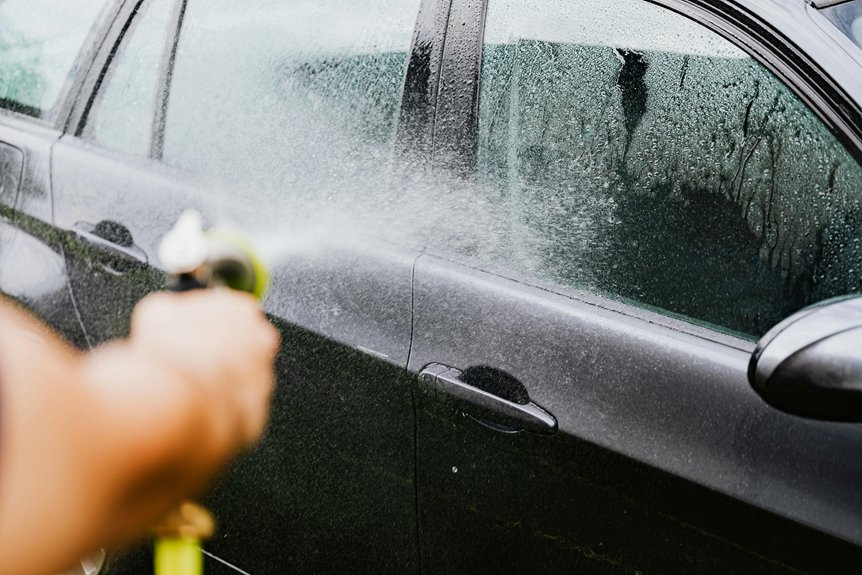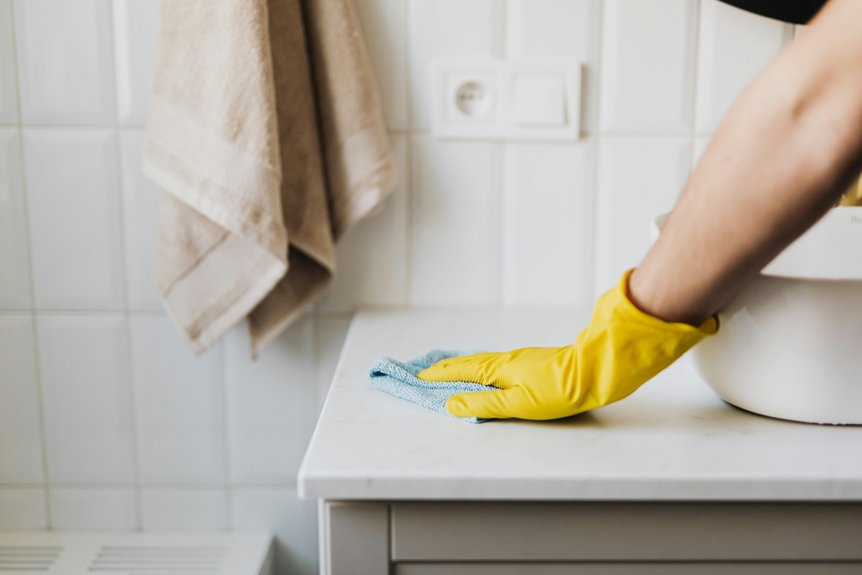Maintaining a nursing home isn’t just about keeping the lights on; it’s about creating a safe and welcoming environment for residents. By conducting regular safety inspections and prioritizing cleanliness, you set the foundation for quality care. Routine maintenance and ensuring accessibility are equally crucial. But what about engaging residents and gathering their feedback? These aspects can greatly enhance their experience. Let’s explore these essential tips to elevate your nursing home’s standards.
Key Takeaways
- Conduct regular safety inspections to identify hazards and prioritize necessary repairs, ensuring a safe environment for residents and staff.
- Maintain cleanliness with daily deep cleaning protocols, particularly in high-use areas like restrooms and dining spaces, to promote resident health.
- Establish a structured maintenance schedule for routine checks of safety equipment and facilities, documenting activities for accountability and tracking.
- Optimize accessibility through features like ramps, grab bars, and well-lit pathways, ensuring safe mobility for residents with varying needs.
- Engage residents through activities and gather feedback regularly to improve the quality of care and ensure their satisfaction with services provided.
Conduct Regular Safety Inspections

To guarantee the safety of residents in a nursing home, it’s essential to conduct regular safety inspections. Schedule these inspections consistently to confirm emergency preparedness.
During each visit, focus on hazard identification—check for potential risks like loose railings, obstructed pathways, or inadequate lighting. Involve staff in the process; their daily observations can highlight overlooked issues.
Document findings and prioritize necessary repairs. Create a follow-up plan to address identified hazards promptly, confirming a safe environment.
Encourage residents to report any concerns, fostering a proactive safety culture. Regular inspections not only protect residents but also enhance overall quality of care and peace of mind.
Prioritize Cleanliness and Sanitation
While maintaining a clean and sanitized environment might seem routine, it’s essential for the health and well-being of nursing home residents. Prioritizing hygiene practices and adhering to sanitation protocols is vital. Here’s a structured approach to enhance cleanliness:
| Area | Hygiene Practices | Sanitation Protocols |
|---|---|---|
| Common Areas | Regular dusting and mopping | Disinfect high-touch surfaces |
| Restrooms | Daily deep cleaning | Use EPA-approved cleaners |
| Dining Areas | Clean tables after each meal | Sanitize utensils and trays |
| Resident Rooms | Weekly deep cleaning | Change linens frequently |
Implement Routine Maintenance Schedules
To keep your nursing home running smoothly, you need to establish regular inspection timelines for all facilities and equipment.
By systematically documenting maintenance activities, you can track progress and address issues before they escalate.
This proactive approach not only enhances safety but also improves the overall quality of care for residents.
Establish Regular Inspection Timelines
Establishing regular inspection timelines is essential for the effective maintenance of nursing homes. You should determine appropriate inspection frequency based on facility needs, regulatory requirements, and compliance standards.
Create a structured schedule to guarantee that all areas, from safety equipment to plumbing, are routinely checked. Assign dedicated staff to oversee these inspections, facilitating accountability and thoroughness.
Document Maintenance Activities Systematically
After you’ve set up regular inspection timelines, the next step is to document maintenance activities systematically.
Utilize effective document management techniques to keep track of all maintenance logs. Create a dedicated folder, either digitally or physically, where you can store these records. Each log should detail the date, tasks performed, and any issues discovered.
This organized approach not only guarantees compliance with regulations but also helps in identifying recurring problems. Regularly reviewing these logs allows you to refine maintenance schedules and prioritize urgent repairs, ultimately enhancing the safety and comfort of your nursing home environment.
Stay proactive and thorough!
Ensure Accessibility and Mobility
To guarantee accessibility and mobility in your nursing home, you’ll want to design spaces that allow for smooth wheelchair navigation.
Installing grab bars strategically throughout the facility is essential for safety and support.
Additionally, optimizing pathway lighting solutions can greatly enhance visibility, making it easier for residents to move around confidently.
Design for Wheelchair Navigation
When designing a nursing home, prioritizing wheelchair navigation is essential for ensuring residents can move freely and safely throughout the facility.
Start by installing wheelchair ramps at all entry points and changes between levels. Make sure hallways are wide enough to accommodate wheelchairs, allowing easy passage.
Choose accessible furniture that’s not only comfortable but also functional, with appropriate heights for dining and communal areas. Avoid clutter in pathways to prevent obstacles.
Install Grab Bars Strategically
Enhancing mobility in nursing homes goes beyond wheelchair navigation; it also involves strategic placement of grab bars.
Choose durable grab bar materials like stainless steel or reinforced plastic for longevity and safety. Install these bars in key areas such as bathrooms, hallways, and beside beds to provide reliable support.
Use proper installation techniques, ensuring they’re anchored securely into wall studs to withstand weight. Don’t overlook height and location—place them within easy reach for residents.
Regularly check for wear and tear, replacing any damaged bars immediately. This proactive approach will greatly enhance accessibility and mobility for all residents.
Optimize Pathway Lighting Solutions
Effective pathway lighting is essential for guaranteeing safe mobility throughout nursing homes, especially during the evening hours.
To enhance safety, consider installing LED fixtures along outdoor pathways; they provide bright, energy-efficient illumination. Incorporating motion sensors can activate lights as residents approach, guaranteeing areas are well-lit when needed.
Additionally, using ambient lighting creates a welcoming atmosphere while meeting safety standards. Regularly assess and maintain these lighting solutions to assure peak functionality.
Create an Engaging Environment

Creating an engaging environment in a nursing home is essential for fostering residents’ well-being and social interaction. By establishing activity zones and sensory gardens, you can enhance the quality of life for your residents. Here’s how to visualize these spaces:
| Activity Zones | Sensory Gardens |
|---|---|
| Game area | Aromatic plants |
| Arts and crafts corner | Textured pathways |
| Reading nook | Colorful flowers |
| Music corner | Water features |
| Fitness area | Interactive sculptures |
Incorporate these elements to create stimulating environments that promote participation and connection among residents.
Train Staff on Emergency Procedures
While fostering an engaging environment is essential for residents’ well-being, ensuring their safety during emergencies is equally important.
Train your staff on emergency procedures to enhance their readiness and confidence in crisis situations. Schedule regular emergency drills to familiarize everyone with evacuation routes, communication protocols, and specific roles during an emergency.
Encourage open discussions about procedures so staff can ask questions and clarify uncertainties. By prioritizing thorough training and consistent practice, you’ll create a culture of preparedness that ultimately safeguards residents.
Gather Feedback From Residents and Families

How can you guarantee that your nursing home meets the needs and expectations of residents and their families? Start by gathering feedback through resident surveys and family meetings.
Regularly distribute surveys to capture residents’ experiences and preferences, ensuring you address any concerns promptly. Schedule family meetings to foster open dialogue; this helps families feel involved and valued.
Encourage honest feedback and act on the insights you gather. By proactively engaging with both residents and families, you’ll create a supportive environment, enhance satisfaction, and continually improve the quality of care.
Conclusion
By following these seven essential tips for nursing home maintenance, you can create a safe, clean, and engaging environment for residents. Regular safety inspections, strict cleanliness protocols, and routine maintenance schedules are vital for minimizing hazards. Ensuring accessibility enhances mobility, while engaging residents fosters a sense of community. Training staff on emergency procedures and gathering feedback from residents and families will further elevate care quality. Prioritizing these aspects not only improves resident satisfaction but also promotes a thriving nursing home atmosphere.



